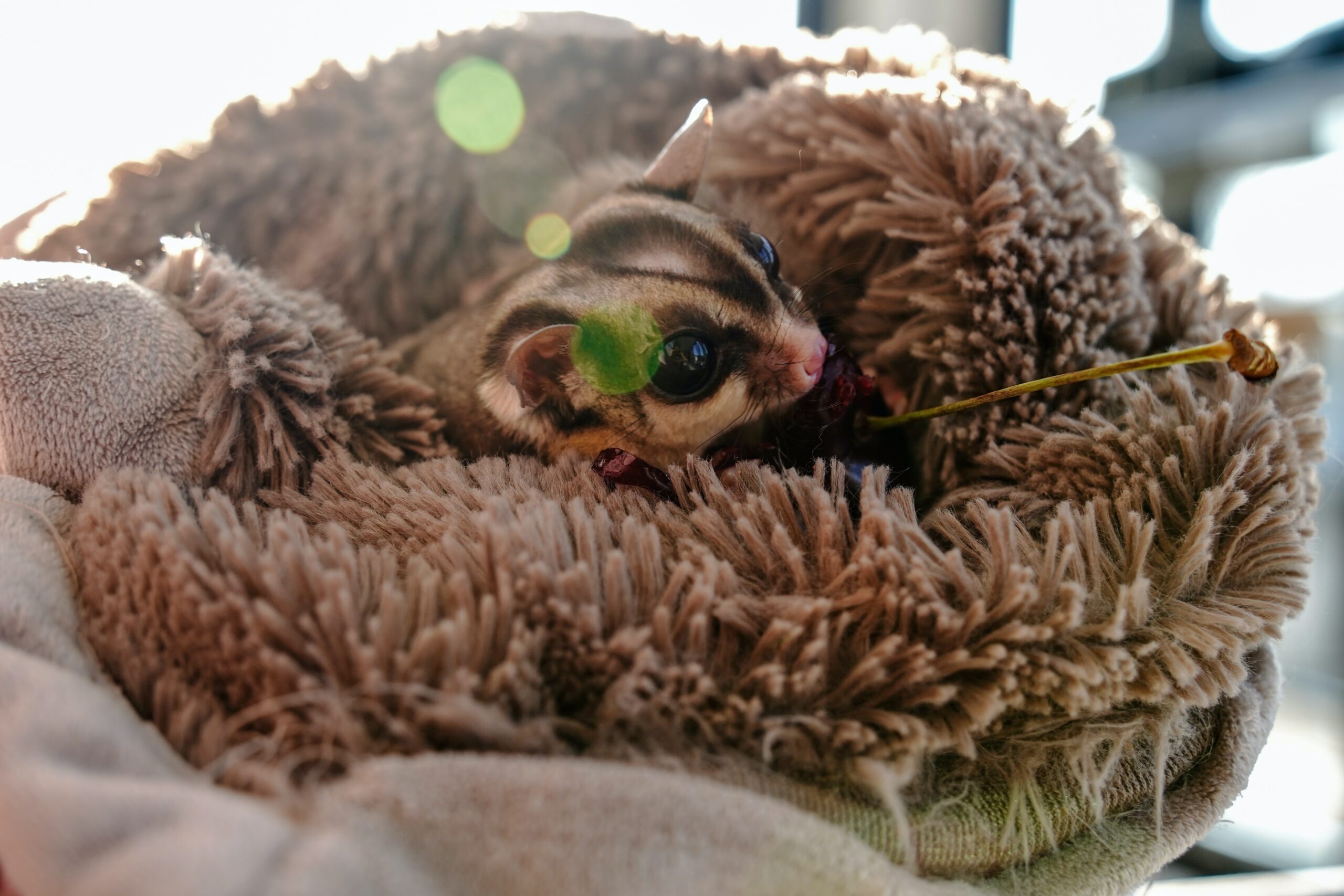Can sugar gliders use leashes? This is a question that many people have, and the answer is not entirely clear. Some people say that it is possible to train a sugar glider to walk on a leash, while others claim that it is not safe to do so. In this blog post, we will explore the topic of sugar glider leashes and provide you with some information on how to train your sugar glider to walk on one.
Do sugar gliders need leashes to walk around safely outdoors?
No, sugar gliders do not need leashes to walk around safely outdoors. Sugar gliders are arboreal animals, meaning they live in trees, and their bodies are specially adapted for life in the canopy.
They have long tails that they use for balance and sticky pads on their feet that help them cling to branches.
As a result, sugar gliders are remarkably agile climbers and are not at risk of falling out of trees.
In fact, leashes can be dangerous for sugar gliders, as they can get tangled in the leash or catch their claws on the metal clips.
If you do take your sugar glider outside, it’s best to do so in a large enclosure where they can climb and explore without getting lost.
Are there any dangers associated with taking your sugar glider for a walk on a leash outdoors, such as being attacked by other animals or getting lost?
When taking your sugar glider for a walk outdoors, there are a few potential dangers to be aware of.
- First, sugar gliders are small animals and could potentially be attacked by predators such as birds of prey or cats. It’s important to keep them close by and supervise them at all times when they’re outdoors.
- Additionally, sugar gliders are good climbers and jumpers, so they could potentially escape from their leash if not supervised properly.
- Finally, while unlikely, there is always the possibility that your sugar glider could become lost if they manage to slip out of their harness or leash.
For this reason, it’s a good idea to choose a safe area for walks and make sure your sugar glider is microchipped in case they do get lost.
How do sugar gliders typically behave in the wild and in captivity?
In the wild, sugar gliders are highly social animals that live in colonies of up to 20 individuals. They are very active, spending most of their time gliding through the trees in search of food. At night, they nest together in tree cavities or hollow logs.
Sugar gliders are also very vocal, communicating with one another through a range of sounds including squeaks, clicks, and barks.
In captivity, sugar gliders can be kept as single pets or in pairs. They require a large cage with plenty of space to climb and explore.
They also need a diet that includes insects, fruits, and vegetables. Sugar gliders typically form strong bonds with their owners and can be very affectionate.
However, they can also be nippy if they feel threatened or stressed. With proper care and attention, sugar gliders can make rewarding pets.
Conclusion
In conclusion, sugar gliders can certainly use leashes, and there are a few different leash options available depending on your needs.
If you’re looking for a solution that will allow you to take your sugar glider out of the house without worry, a harness and leash may be the best option.
On the other hand, if you’re simply looking for a way to let your sugar glider explore your home without getting into too much trouble, a simple clip-on leash may be all you need.
Whichever route you decide to go, remember to always supervise your sugar glider while it’s on a leash, and never leave it unsupervised for long periods of time. With a little patience and some trial and error, you’ll be able to find the perfect solution for you and your sugar glider.




